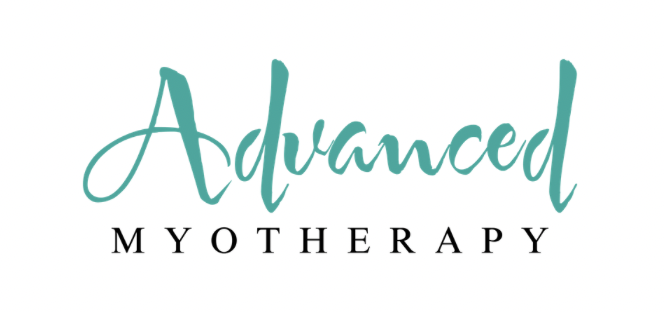As Myotherapists, people seek our help when pain develops from postural dysfunction and injury.
Here are 6 simple and practical ways we frequently recommend my clients routinely use to gain the most from their body and prevent the ongoing need for medical intervention and drugs for pain.
1. Sleep on your back
Side and stomach sleepers suffer with more pain from their dominant positions leading to rounding (internally rotating) shoulders and neck tension. Sleeping on the back (aside from during pregnancy) is the best way to prevent poor sleep posture and pain down the track.
2. Balance daily activities
Using technology devices like phones and computers and working in various trades, can often lead to overuse of particular muscle groups. Myotherapist work with people in educating them around how to correct and reverse posture related pain through self care.
Using a foam roller or tightly rolled towel under the spine while laying down relaxing at the end of the day, is a great way to open the shoulders, chest and heart centre, to bring the shoulders back into alignment.
3. Strengthen your core
The very basic action of consciously bringing the stomach up and in, works to develop core integrity. Core strength, supported by strong gluts and a strong pelvic floor, is particularly important during and after pregnancy.
This helps not only prepare for physiological birth, but speeds recovery from pregnancy pressure and softening. Recovering strength in the core is particularly important for mothers to help prevent and reduce any weakness associated lower back pain.
Bringing the spine flat to compress transverse abdominal muscles to engage the stomach, is a fantastic discipline to incorporate into your regular routine for core strengthening exercise.
Including squats to build strong gluts also goes a long way to maintaining a strong pelvic floor to prevent imbalances leading to other postural related problems later.
[/av_textblock]
[/av_one_half][av_one_half min_height=” vertical_alignment=” space=” custom_margin=” margin=’0px’ row_boxshadow=” row_boxshadow_color=” row_boxshadow_width=’10’ link=” linktarget=” link_hover=” title_attr=” alt_attr=” padding=’0px’ highlight=” highlight_size=” border=” border_color=” radius=’0px’ column_boxshadow=” column_boxshadow_color=” column_boxshadow_width=’10’ background=’bg_color’ background_color=” background_gradient_color1=” background_gradient_color2=” background_gradient_direction=’vertical’ src=” background_position=’top left’ background_repeat=’no-repeat’ animation=” mobile_breaking=” mobile_display=” av_uid=’av-2u6a4q’]
[av_textblock size=” font_color=” color=” av-medium-font-size=” av-small-font-size=” av-mini-font-size=” av_uid=’av-kjoua36d’ id=” custom_class=” admin_preview_bg=”]
4. Stretch slowly and often
My advice is simple. Lengthen and strengthen. Keeping the muscles not only strong, but also long and stress free, allows for a better range of motion and mobility long term. This is especially important for those who play sports and train for both strength and endurance.
To prevent learning the hard way with muscle tears, sprains and injuries, the best method of active recovery is to spend sufficient time regularly stretching.
Slow stretching is a deeper, more gentler way of increasing flexibility and joint mobility essential for long term musclulo-skeletal health.
5. Balance your pelvis
The main hip flexor has a lot to do with the pressure placed on the lower back. Lower back pain often develops as a result of the main hip flexor (iliopsoas) shortening over time when sitting too long, too often or from simple stiffness and fatigue.
Stretching out the quads leading into a deeper hip stretch regularly will go a long way in preventing hip flexor shortening = causing an anterior pelvic tilt, = leading to lower back pain.
6. Use heat to melt muscles
Unless you suffer from arthritis that is triggered by heat, rather than cold, using heat therapy works magic to melt muscle tension.
Helping to restore original muscle length through relaxing the area and restoring blood flow, heat application to a muscle group brings great relief from built up tension and pain.
Incorporating these simple steps can greatly reduce muscular pain (a large percentage of pain is muscular), so until your next visit to a Myotherapist, I hope these practical tips are as powerful for you as they have been for many of my clients over the years.
[/av_textblock]
[av_image src=’https://www.advanced-myotherapy.com/wp-content/uploads/2020/11/Spring-Summer-2020-17.jpg’ attachment=’9663′ attachment_size=’full’ align=’center’ styling=” hover=” link=” target=” caption=” font_size=” appearance=” overlay_opacity=’0.4′ overlay_color=’#000000′ overlay_text_color=’#ffffff’ copyright=” animation=’no-animation’ av_uid=’av-kjouanzo’ id=” custom_class=” admin_preview_bg=”][/av_image]
[av_image src=’https://www.advanced-myotherapy.com/wp-content/uploads/2019/11/Screen-Shot-2019-11-04-at-4.39.09-PM.png’ attachment=’8458′ attachment_size=’full’ align=’center’ styling=” hover=” link=’manually,https://www.advanced-myotherapy.com/prices/’ target=” caption=” font_size=” appearance=” overlay_opacity=’0.4′ overlay_color=’#000000′ overlay_text_color=’#ffffff’ copyright=” animation=’no-animation’ av_uid=’av-kjouanzo’ id=” custom_class=” admin_preview_bg=”][/av_image]
[/av_one_half]
